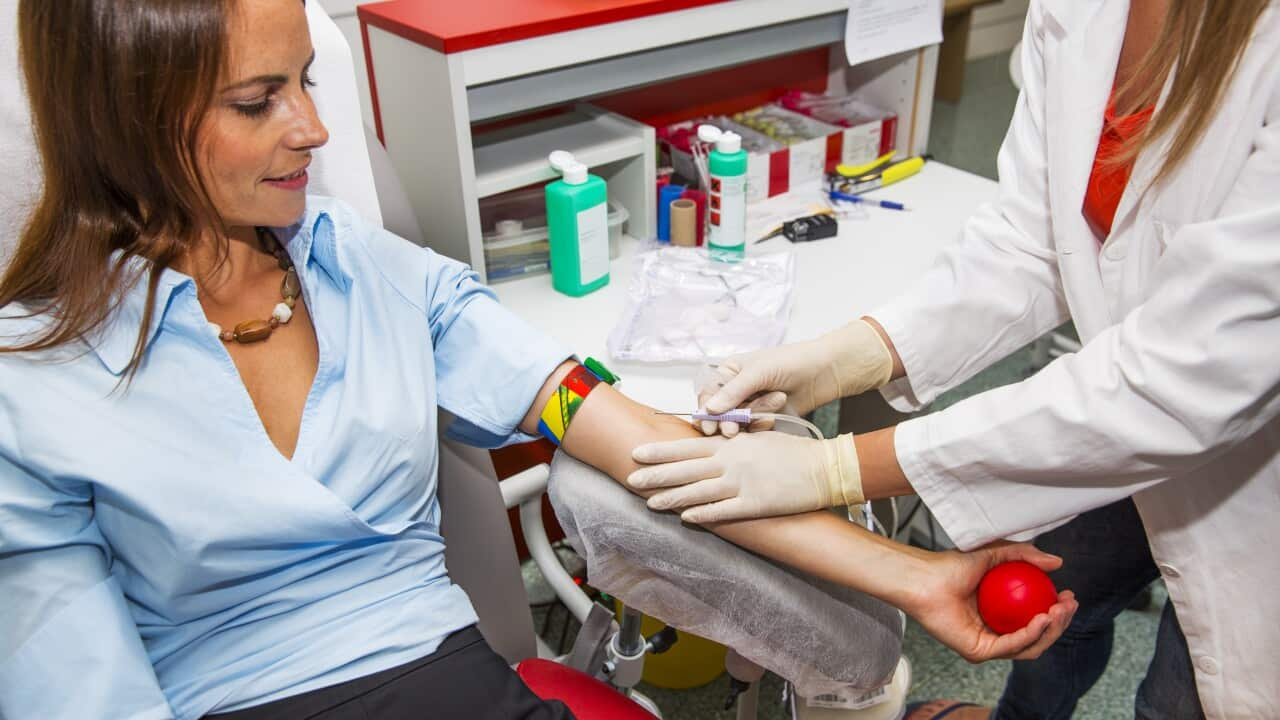Key Points
- The demand for blood platelets in Australia has hit an all-time high.
- Unlike other countries, women in Australia can’t donate platelets due to a potential risk to a recipient’s health.
- Currently, just over 560,000 donors maintain Australia’s blood and plasma supply: Lifeblood.
The need for platelets — tiny cell fragments within the blood that help stop bleeding — has never been higher, but not all Australians can help.
Platelets are gold-coloured cells used to help people undergoing chemotherapy avoid blood loss, and can also help people who have lost blood after an accident or surgery.
Over 155,000 units — of 300ml — were needed last year, up 5 per cent on the previous year, but less than half the population can help meet the demand.
Women cannot donate platelets in Australia, unlike in the UK and US, due to concerns about a rare but potentially fatal reaction in recipients potentially caused by antibodies more commonly found in women’s blood.
Where do platelets help?
Platelet counts in people suffering from leukaemia or taking treatments such as chemotherapy can drop so low that they have spontaneous bleeding.
Even a small amount of bleeding is dangerous, especially if it happens in the brain. Platelets can stop that by clotting the blood and stop the bleeding.
They can also stop bleeding during surgery or after major trauma, from a workplace accident to a shark attack.
Can women donate platelets?
In countries such as the UK, US, Canada and New Zealand, women can donate platelets.
In the US, women who’ve had a pregnancy will be asked for details before they can be allowed to do so, according to the American Red Cross website.
“Recently, it has been discovered that women who have previously been pregnant are more likely to carry antibodies that are believed to sometimes cause post-transfusion complications for blood and platelet recipients,” the website said.
“Until these complications are better understood, the Red Cross will ask new female platelet donors about their pregnancy history and test those that have been pregnant for these antibodies.”
Meanwhile, Australian Red Cross Lifeblood is urging 100,000 Australians to donate blood for the first time over the next year.
“We know 100,000 people will show up if they have a compelling reason to do so, like cheering on their team at the MCG,” executive director of donor experience Cath Stone said.
“We’re calling on 100,000 people to find their reason to show up to donate blood and plasma.”
What’s the blood donation situation in Australia?
Demand for whole blood in Australia is at a 12-year high.
Lifeblood has 561,000 registered blood donors in Australia, slightly down from a high of 571,000 in September 2009.
In the last financial year, the demand for red cells was 704,650 units — up 2.4 per cent over the previous year and the highest annual demand since 2012-13.
“Continual impacts of COVID-19 on elective surgery delays and cancellations, and delays with annual medical checks by many in the population were thought to be the reason for these increases,” a Lifeblood spokesperson told SBS News.
“Just over 560,000 active donors currently maintain the blood and plasma supply for our population of 27 million, but new donors are crucial to continue to meet the growing nation’s needs.”


